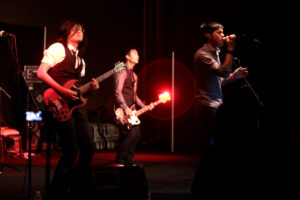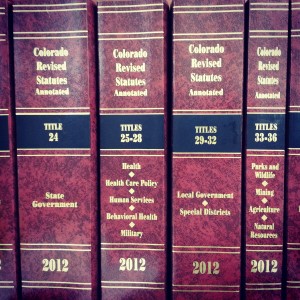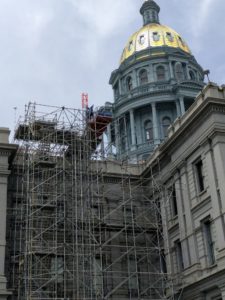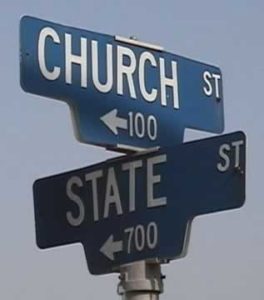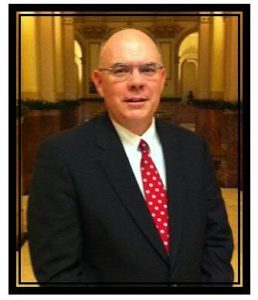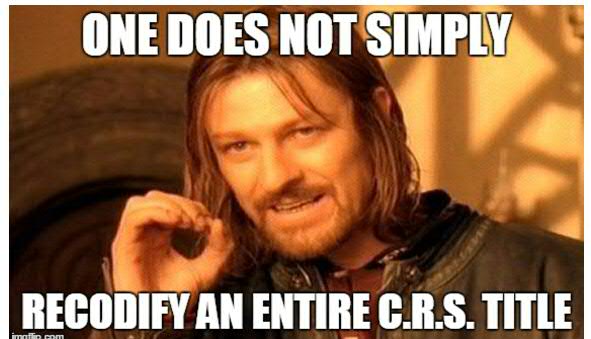by Ed DeCecco
Sadly, “Maximum Reserve” is not the name of the next Jerry Bruckheimer summer blockbuster. Nor is it even an oft used term. By last count, it appears in a measly .0000003% of sampled books. That makes your odds of randomly picking up a book with this phrase about the same as winning the lottery. Unless, that is, your book shelf possesses three feet of handsome red volumes, known as the Colorado Revised Statutes. Then this is indeed your lucky day because “maximum reserve” is a defined term in section 24-75-402, C.R.S., and is at the heart of the statutory limit on the uncommitted reserves in a cash fund.
The “maximum reserve”[1] is defined as “sixteen and five-tenths percent of the amount expended from a cash fund during the fiscal year” and is used to create a limit on the uncommitted reserves in a cash fund at the end of a fiscal year. So, if a state agency spends $1,000,000 from a cash fund during a fiscal year, then the maximum amount that can be left in the cash fund at the end of the year is $165,000, which is roughly equal to two months of its spending.
Except if it is not. Sometimes an alternative limit is appropriate. To address this, the General Assembly created the cleverly named “alternative maximum reserve,”—side note: also a good name for the movie sequel—which is a maximum reserve balance established in the constitution, by law, or Joint Budget Committee (JBC) waiver (more on that later) that is different from 16.5% of the amount expended. For example, the General Assembly could establish an alternative maximum reserve of 25% of the amount expended or even a specific dollar amount.
If a state agency exceeds the applicable reserve limit for a fiscal year, then it is required to reduce the fees the agency collects in the next year so that it won’t do so again. The agency may subsequently raise a fee, but only if doing so won’t cause it to have excess uncommitted reserves. And if there are excess uncommitted reserves for three or more years, then the agency must deliver a hostage to the State Controller’s office until it complies. (Sorry, I’ve been binge watching Game of Thrones.) The real penalty is that the State Controller will restrict the amount of money available to be spent from the cash fund.
Now, a statutory requirement without exceptions is like an Elvis impersonator without a sequin jumpsuit, and the limitations on uncommitted reserves are replete with them. The limit only applies to a “cash fund,” which in this context means “any fund that is established in law for a specific program or purpose and that includes moneys from fees,” but excluding the state general fund, any federal fund, and a fund used by a state institution of higher education. So, you’ll be happy to know that the state is free to have a general fund surplus that exceeds the maximum reserve.
In addition, a cash fund is a depository for “fees,” which, for purposes of the maximum reserve, are any money collected or received by an entity but excluding, among other things:
- Revenue that is not state fiscal year spending;
- Fines or other criminal penalties;
- Money transferred from the state general fund;
- Non-discretionary charges or assessments;
- Interest and income; and
- Gifts or donations. (Everybody loves gifts. C’mon, who would want a cap on those?)
So if a cash fund consists entirely of non-fee revenue, then the maximum reserve does not apply, and if a cash fund is a mix of fee and non-fee revenue, then the non-fee revenue is proportionally excluded from the uncommitted reserves.
But wait! That’s not all! The limit on uncommitted reserves also doesn’t apply to cash funds established to fund capital construction, cash funds with uncommitted reserves that are less than $200,000, cash funds only used for a program that is less than two years old, and a bunch of cash funds that are expressly excluded from the limit.
Finally, a state agency can solicit the JBC for a waiver from the maximum reserve based on specific circumstances. The JBC can, for up to three years, grant an exemption or establish an alternative maximum reserve for the agency. Given that state agencies sometimes have perfectly good reasons to exceed the maximum reserve, this seems like an efficient alternative to enacting legislation to specifically exempt a single cash fund. And fewer bills to be drafted means fewer bill drafters…hey, wait a minute!
Admittedly, there are numerous exceptions. But considering that there are scads of cash funds,[2] it still has a broad application. Plus, these exceptions can be better understood when viewed in light of the avowed purpose of the limit on uncommitted reserves. Because fees contribute to the TABOR fiscal year spending limit, it is necessary to keep them in check by establishing a reasonable reserve derived from fee revenue.
And don’t think that the limit on uncommitted reserves was created and then immediately forgotten—like this legislative staff blog article, for example. The State Controller is required to annually prepare a report to be delivered to the JBC and the Office of State Planning and Budgeting identifying the uncommitted reserves for each state cash fund, and the State Auditor is required to audit the report.
Well, that’s probably about all you want to read about limits on uncommitted reserves for cash funds, and I need to start work on my screenplays for the “Maximum Reserve!” movie franchise, so I bid you adieu.
[1] The “maximum reserve” was formerly known as the “target reserve,” which gave the misimpression that state agencies should aspire to have that amount in reserve at the end of each year. Thanks to Alfredo Kemm, Joint Budget Committee Staff, for suggesting the sensible rebranding.
[2] Perhaps, too many? See “A Legislator’s Guide to Creating Cash Funds.”

